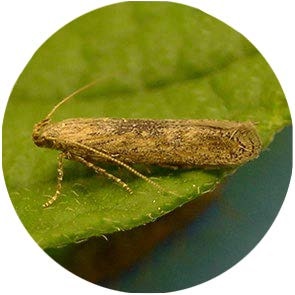


| Latin Name | Phthorimaea operculella |
| Common Name | Potato tuber moth |
| Biology | Adults are nocturnal, hiding during the day, with strong flight ability, laying eggs on potato leaves, stems, and tubers. Larvae bore into and feed on leaves, consuming mesophyll tissue to create curved tunnels; when damaging tubers, they bore into the interior to feed, forming holes that are prone to pathogen infection. This pest is prevalent in warm regions and is a key pest of potatoes. |
| Damage | This pest primarily damages potatoes but also affects eggplants, peppers, and other Solanaceae plants. |
| Distribution Regions | America and Africa |
| Monitoring | Pheromone lures mimic natural sex pheromones to attract male insects into specialized traps for population monitoring and suppression. As a core IPM component, monitoring enables early risk detection and targeted control. Mass trapping reduces mating opportunities to curb offspring populations. Protocols: ●Use only with matched traps. ●15-45 traps/hectare,replace/replenish every 4-6 weeks. ●Wear gloves or wash hands with detergent when switching lure types. ●Refer to trap-specific hanging instructions. |
| Recommended Traps | Delta Trap, Wing Trap |

Share your contact information to receive precision-matched pheromone solutions. Should our existing portfolio lack an optimal fit, our synthetic chemistry team will initiate custom development—from molecular structure design to scaled production.